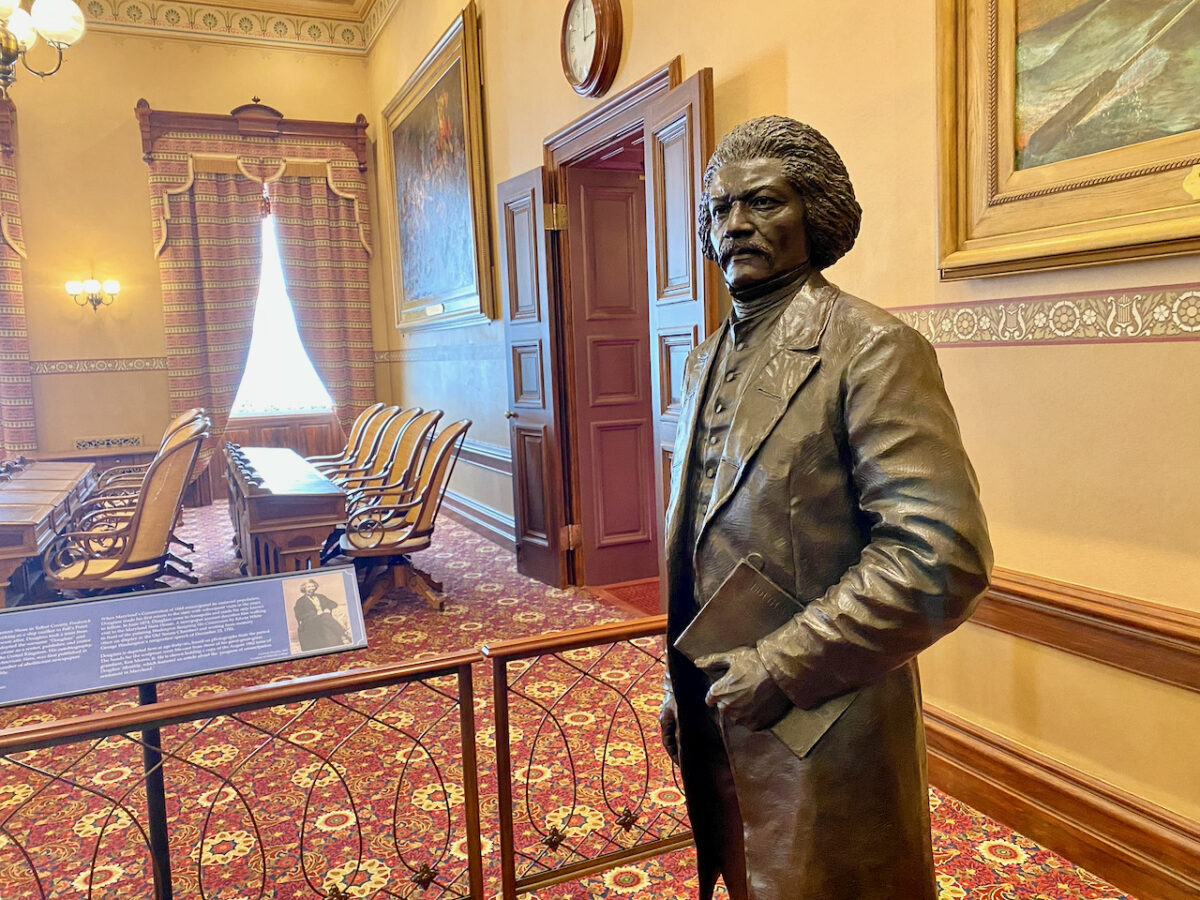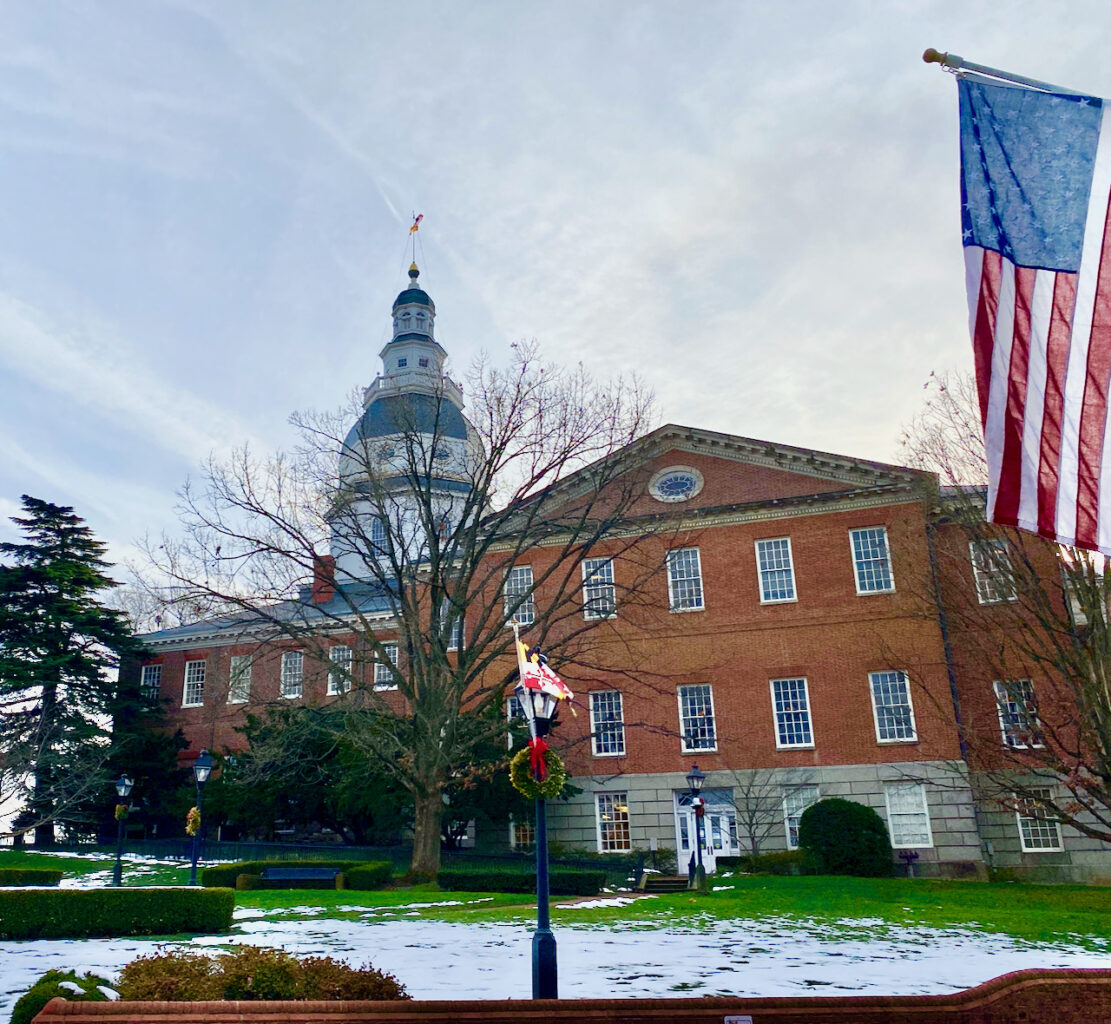
The Maryland State House is the oldest state capitol in continuous legislative use and is the only state house ever to have served as the nation’s capitol: Glynn Wilson
By Glynn Wilson –
ANNAPOLIS, Md. (Jan. 12) — Two days before Christmas in 1783, George Washington appeared in the old Senate chamber here to submit his resignation as commander in chief to the Continental Congress.
“Having now finished the work assigned me, I retire from the great theatre of Action; and bidding an Affectionate farewell to this August body under whose orders I have so long acted, I here offer my commission and take my leave of all the employments of public life,” Washington told the attending members of Congress in a historic and moving moment in the early days of the new country.
“The spectators all wept, and there was hardly a member of the congress who did not drop tears,” one Maryland delegate wrote. After his emotional speech, according to another witness, Washington “rode off from the door, intent upon eating his Christmas dinner at home” back at Mt. Vernon, Virginia.

A bronze statue of George Washington resigning his commission stands in the Old Senate Chamber: Glynn Wilson
Toward the end of the Revolutionary War, Annapolis served as capital to the newly forming American nation when the United States Congress of the Confederation met in in the Maryland State House from Nov. 26, 1783 to Aug. 19, 1784. It is the oldest U.S. state capitol in continuous legislative use, dating to 1772, and the only state house to ever serve as the nation’s capitol.
The Treaty of Paris was ratified by Congress here too on January 14, 1784, known as Ratification Day, the formal end of the American Revolutionary War.
Back on Sept. 11, 1776, delegates from New Jersey, New York, Delaware, Pennsylvania and Virginia, who had gathered in the chamber to discuss interstate commerce, ended up issuing a call to draft the United States Constitution.
This history, previously unknown to me and probably not known to that many others around the country, is closely related to the American history in Philadelphia, Pennsylvania, which I was able to see up close and personal back in the summer of 2018.
Related: My visit to Independence Hall and Square in Philadelphia, Pennsylvania
Of course everyone here knows who George Washington was (Feb. 22, 1732 – Dec. 14, 1799). He was an American soldier, statesman and Founding Father who served as the first president of the United States from 1789 to 1797.
Appointed by the Continental Congress as commander of the Continental Army, Washington led the patriot forces to victory in the American Revolutionary War then presided at the Constitutional Convention of 1787, which established the Constitution of the United States and a federal government. Washington has been called the “Father of the Nation” for his manifold leadership in the formative days of the country.
Fewer people know about the history of Annapolis, Maryland, however, so it was a great subject for a day trip this week as the Maryland General Assembly convenes in an election year.
In September 1786 at the Annapolis Convention, delegates from five states discussed revisions to the Articles of Confederation. The convention’s call for a further meeting led to the assembling of delegates at Philadelphia from May 14 to Sept. 17, 1787 to draft the United States Constitution.
The capitol has the distinction of being topped by the largest wooden dome in the United States constructed without nails. The current building, which was designated a National Historic Landmark in 1960, is the third statehouse on its site. The building is administered by the State House Trust, established in 1969.
Construction began in 1772, but was not completed until 1797 due to the ongoing American Revolutionary War. The two-story brick Georgian style structure, located inside State Circle, was designed by architect Joseph Horatio Anderson.
A small portico juts out from the center of the building, topped by a pediment, with two high arched windows framing the entrance. On both floors, large rectangular windows line the facade.
A cornice is topped by another pediment and the sloping roof gives way for a central octagonal drum atop which rests a dome. The large dome is topped by a balustraded balcony, another octagonal drum and a lantern capped by a lightning rod. The rod was constructed and grounded according to the direct specifications of its inventor, Benjamin Franklin.
The rotunda is the primary home of the Maryland Federalist, a 1987 replica of the original Federalist, a tiny ship built by Baltimore merchants in 1788 to celebrate Maryland’s ratification of the U.S. Constitution. Large Corinthian columns support the arches bracing the large dome above. A balustrade lines the second floor balcony.
In the summer of 2012, the original handwritten text of George Washington’s resignation letter was on display in the rotunda. It was again put on display in March 2020 alongside the original Star-Spangled Banner by Francis Scott Key on loan from the Maryland Center for History and Culture.
From Nov. 26, 1783 to Aug. 13, 1784, Annapolis was the capital of the United States. The Congress of the Confederation met in the Maryland State House. Subsequently, Annapolis was a candidate to become the new permanent national capital before Washington, D.C. was built.
On July 5, 1991, The Washington Post published a historical travel article on the Golden Age of Annapolis.
The city came a long way from the tiny settlement founded on a peninsula by Puritans in 1649. That settlement was named Anne Arundel Town, after the second wife of Lord Baltimore, the proprietor of the Maryland colony, and remained small until 1694 when the royal governor, Francis Nicholson, moved the state capital from St. Mary’s City to the peninsula. A year later, the town was renamed Annapolis, after Princess (and soon-to-be Queen) Anne.
“It didn’t take long for the new capital city to turn its political power into prosperity,” according this history from The Post.
Annapolis quickly became a major shipping port, sending tobacco, iron and lumber to England while importing the finest furniture, clothing, silver and other luxuries. The trade made local merchants wealthy, and in time its ramshackle houses were replaced by grand Georgian homes.
The session of the Continental Congress in 1783-1784 was the high point of the city’s early years. After the Congress adjourned, Annapolis’s Golden Age ended, a betrayal set in motion by its top families who saw Baltimore and not their hometown as the future source of ever-greater riches. Baltimore’s deep harbor and easier access to inland markets quickly lured away the big ships, and with them trade, businesses, residents and tradesmen.
Annapolis’s star faded so much so fast that when the British fleet raided the Chesapeake Bay in 1813 and 1814, the red-coated invaders ignored the state capital. But for the state government and the establishment of a Naval School at Fort Severn in 1845, Annapolis might have withered away entirely.
“Hard times, though, often have hidden blessings,” The Post reports.
While Baltimore grew into a mighty industrial center, Annapolis and its historic homes stayed almost unchanged, generally unaffected by the Industrial Revolution. “It is as if the city’s historic area were put into storage, awaiting an uncertain call to reappear on center stage.”
The survivors from that Golden Age are all within a few blocks of the City Dock, the source of the city’s wealth so long ago. State Circle, one of two hills in the city and the centerpiece of Governor Nicholson’s baroque town plan, is an appropriate place to start a walking tour of old Annapolis.
Nicholson planned a city with circles atop those hills, with streets radiating outward like spokes from a wheel. The only land access to the peninsula city would be via West Street. Visitors from that quarter would pass through majestic palisade gates that would be closed at night. Nicholson’s baroque plan wasn’t original; it was a modest copy of designs used in London and Paris.
But it was unique in America until Pierre L’Enfant used the same circle-and-spoke design for his plan for Washington, D.C.
Nicholson’s plan called for a Public Circle (now State Circle) and a Church Circle on the two hills.
The first State House was built on the six-acre Public Circle between 1696 and 1698. It was destroyed by fire in 1704. Its successor served as the seat of Colonial government until 1772, when it fell into such ruin that it was demolished. The third State House, the current one, was built between 1772 and 1795 and is the oldest state capitol in continuous use. Over the years since, the State House was expanded. The original building is the two-story portion topped by the four-tiered dome.
The first floor of the original building is where the legislature met. The second floor is where the governor and the court of appeals had their offices. The governor still has his office there, and the lieutenant governor has taken over the rooms used by the court.
The rooms on the first floor include the Maryland Silver Room (now the Caucus Room), which exhibits the 48 pieces of the silver set of the USS Maryland, a now-decommissioned cruiser.
The most hallowed room on the first floor is the Old Senate Chamber, a surprisingly small (only 15 desks and chairs) and simple room used today for special ceremonies. Its modest appearance is misleading. History was made here.
Despite these historic moments, the room was stripped of its beautiful cornices and carvings in 1873, an act that one observer called a “profanation,” adding that “public opinion was greatly excited by this destruction.”
It took some time, but by 1902 work was started on restoring the Senate chamber and furnishing it with originals and reproductions of the desks and chairs John Shaw built for the original room.
The painting above the fireplace, “Washington, Lafayette and Tilghman at Yorktown,” was done by Charles Willson Peale and has hung in the State House since 1784.
The Old State House is the most visible of the buildings of the Golden Age.

The Maryland State House is the oldest state capitol in continuous legislative use and is the only state house ever to have served as the nation’s capitol: Glynn Wilson
We had lunch at an Italian restaurant called Luna Blu, right around the corner from Gott’s Garage, where you can park for $5. The Fisherman’s Stew with shrimp, mussels and scallops was quite tasty.
After we walked all the way around the capitol building snapping pictures from all angles, we headed down Main Street toward Annapolis Harbor, checking out all the shops, bars and restaurants. We considered the hats at Hats in the Belfry, and ended up for a cocktail at the Iron Rooster before walking back up the hill and heading back out of town west towards Greenbelt.
More Photos

The Maryland State House is the oldest state capitol in continuous legislative use and is the only state house ever to have served as the nation’s capitol: Glynn Wilson

The Maryland State House is the oldest state capitol in continuous legislative use and is the only state house ever to have served as the nation’s capitol: Glynn Wilson

The Maryland State House is the oldest state capitol in continuous legislative use and is the only state house ever to have served as the nation’s capitol: Glynn Wilson

The painting “Washington, Lafayette and Tilghman at Yorktown,” was done by Charles Willson Peale and has hung in the State House since 1784: Glynn Wilson
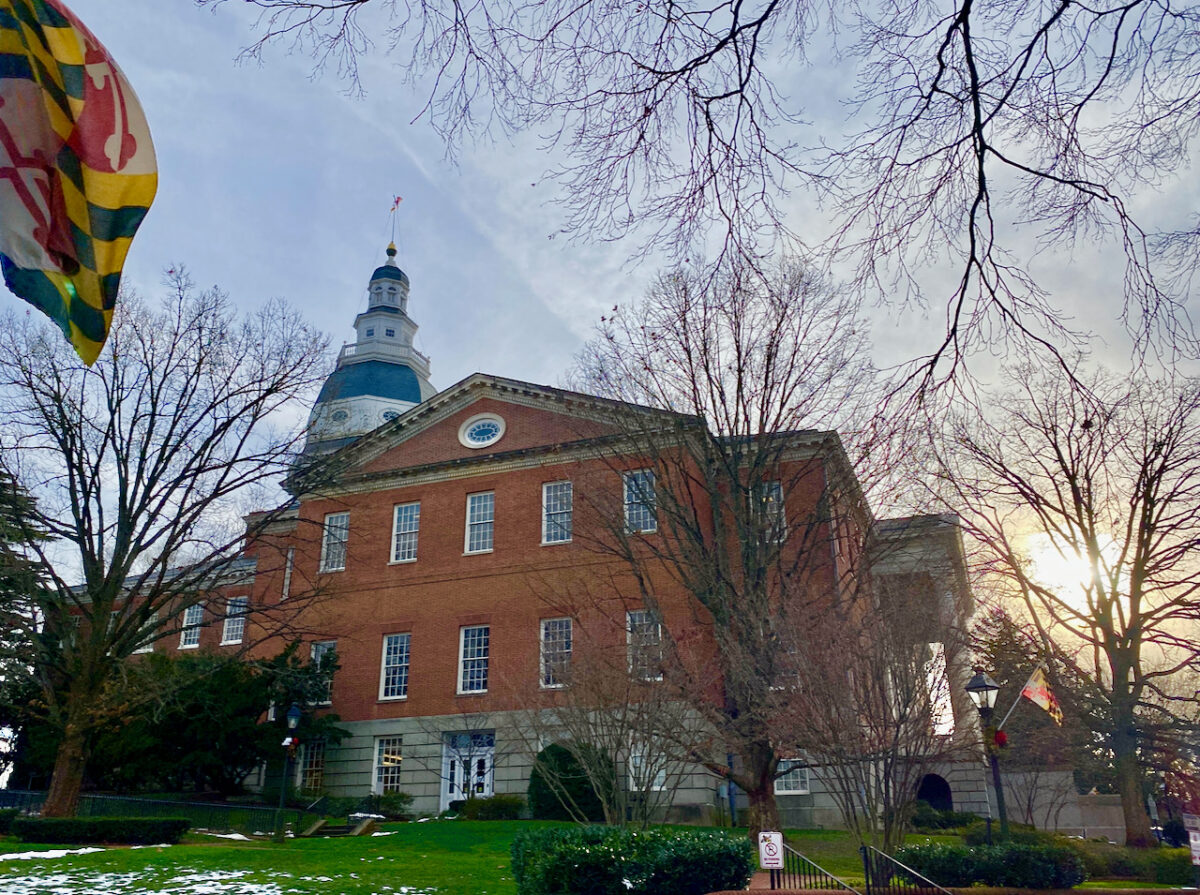
The Maryland State House is the oldest state capitol in continuous legislative use and is the only state house ever to have served as the nation’s capitol: Glynn Wilson
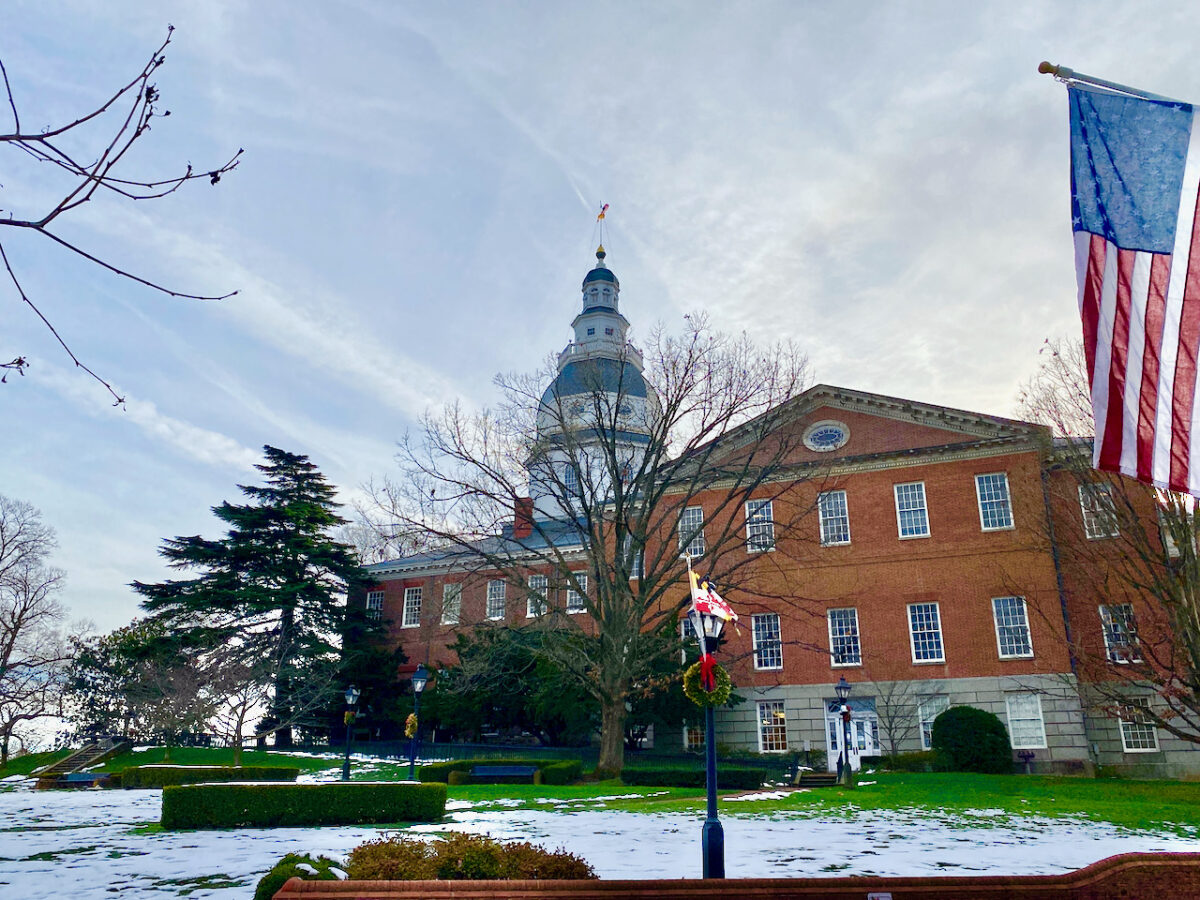
The Maryland State House is the oldest state capitol in continuous legislative use and is the only state house ever to have served as the nation’s capitol: Glynn Wilson

The Maryland State House is the oldest state capitol in continuous legislative use and is the only state house ever to have served as the nation’s capitol: Glynn Wilson
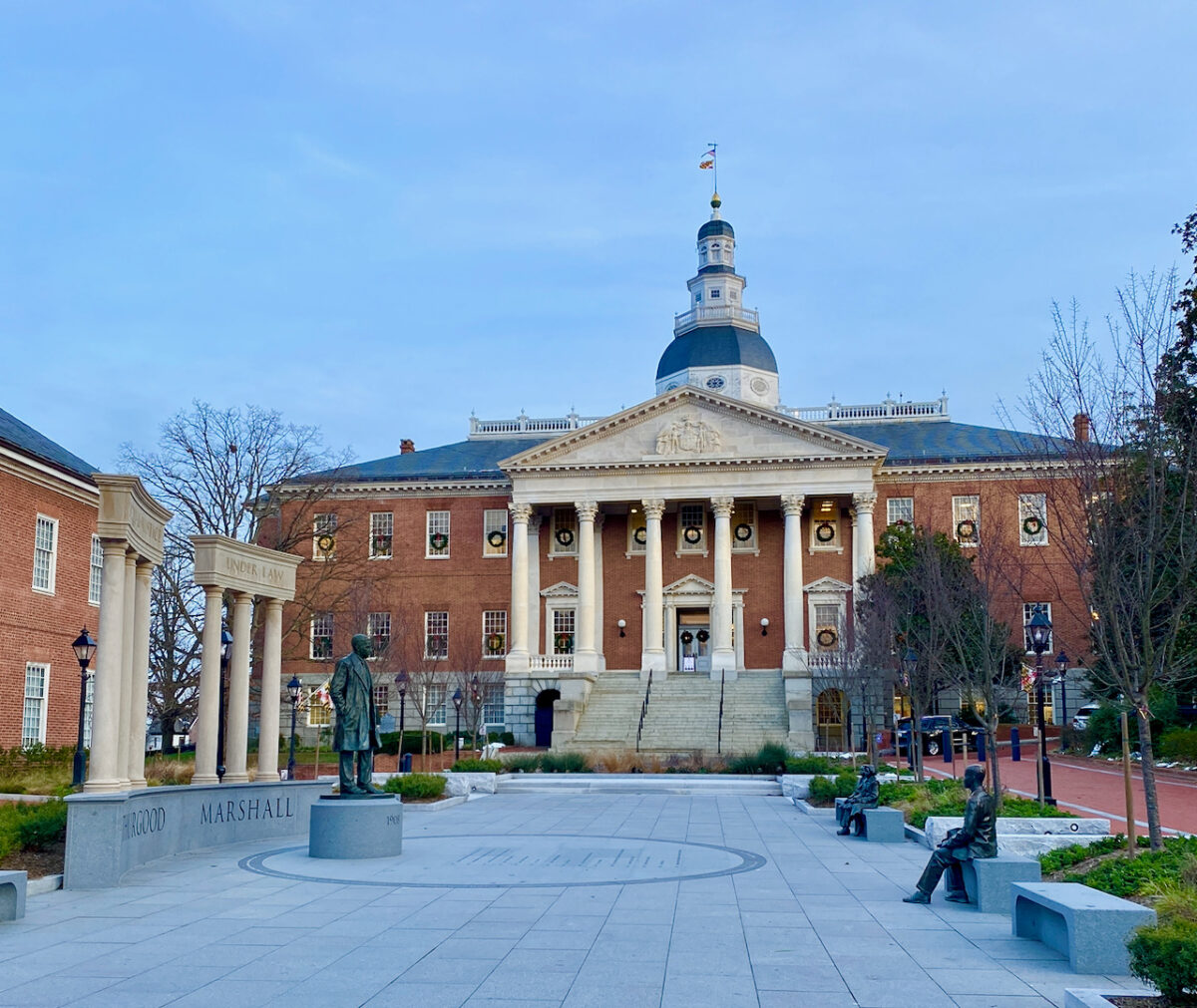
The Maryland State House is the oldest state capitol in continuous legislative use and is the only state house ever to have served as the nation’s capitol: Glynn Wilson
___
If you support truth in reporting with no paywall, and fearless writing with no popup ads or sponsored content, consider making a contribution today with GoFundMe or Patreon or PayPal.



